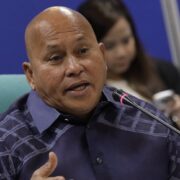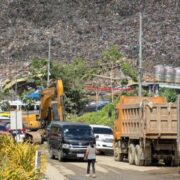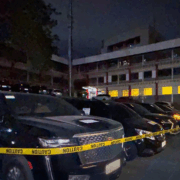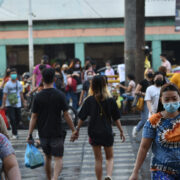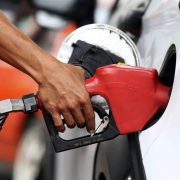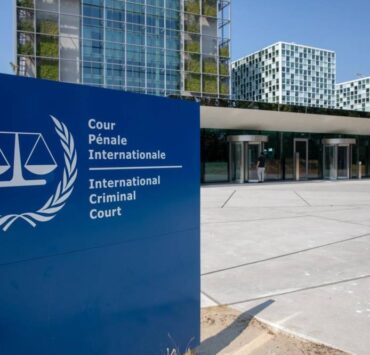Solar minigrid brings light, hope to Goma neighborhood
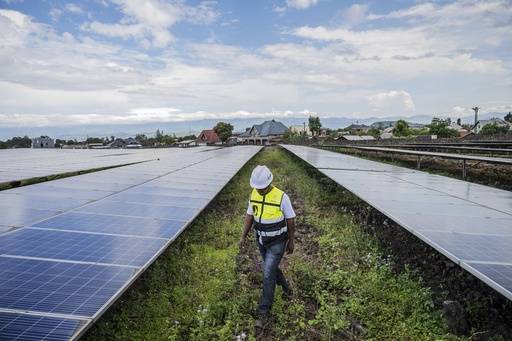
GOMA, CONGO—Street lights erase the shadows where attackers once hid. Noisy, polluting diesel generators have gone silent. New businesses are taking root.
In several Goma neighborhoods where almost nobody had electricity just five years ago, a small solar network is offering a flicker of hope despite widespread poverty and the city’s violent takeover by Congolese rebels early this year.
Advocates believe it’s a model that can be successful throughout the Democratic Republic of Congo and beyond to electrify places where conflict and poverty have left people behind, using renewable energy to benefit those most vulnerable to climate change.
“I remember the first night that we turned on the public street lighting, just spontaneous celebrations in the streets, just people coming out of their homes, singing and dancing with our team,” said Jonathan Shaw, chief executive officer of Nuru, the utility he helped start.
“Just seeing what this meant to people … the sense of their dignity and value that somebody was willing to come and invest in their lives and their communities and their homes (is) so, so moving.”
That was in 2020, three years after Shaw, a former teacher, and Congolese partner Archip Lobo Ngumba built the DRC’s first commercial solar minigrid in the small town of Beni in Congo’s North Kivu province. Provincial officials then asked them to consider Goma, near the Rwandan border, where only a small fraction of the population had access to electricity—usually from diesel-powered generators, Shaw said.
With investor backing, Nuru built the 1.3-megawatt minigrid—interconnected last year with a hydropower grid in Virunga National Park, north of Goma, to bolster resilience—that together power phone and internet service and a private company that pumps, treats and distributes water.
Cold beer
Other customers include a large grain mill, phone-charging stations, a small movie theater and even residents “just plugging in a little fridge and … selling cold beer on the street,” Shaw said.
“You’re just seeing every level of ingenuity and scale,” he said. “It’s been overwhelming how effective that’s been … far beyond what I could have imagined.”
Tradespeople said they spend significantly less than before, when they used diesel generators.
“With generators, we spent about $15 a day if we worked a lot. Now with Nuru, it’s $10 daily and the electricity is better because there’s no breakdown requiring costly repairs,” said welder Mahamudu Bitego, who lives in the Ndosho neighborhood.
And residents say they feel safer since Nuru installed street lights in Ndosho.
“No one can hide under trees anymore,” said Choma Choma Mayuto Banga. “If someone suspicious is hiding, we can spot them and escape.”
Working in conflict zones can be risky, but Nuru says its experience in Goma underscores how beneficial electricity is in these areas.
Last year, unexploded grenades left from past conflicts were found on the Nuru site and one detonated, damaging solar panels. Then early this year, Goma was seized by Rwandan-backed M23 militia in an attack that killed almost 3,000 people, according to United Nations estimates.
Nuru’s electricity kept flowing while power in other areas went down, a fact Shaw believes testifies to its importance to residents, who he said guarded the solar farm’s gates to ensure nobody looted or destroyed the panels.
“The only lights in the city, the only thing powering water and connectivity was our infrastructure,” Shaw said. “It felt worth the whole project just to be there in … some of the darkest moments in people’s lives and to be something they could rely on when nothing else was working.”
Nuru’s solar panels have occasionally been struck by stray bullets during gunfire, said Alain Byamungu Chiruza, Nuru’s senior director of business development. “But in general…our panels are safe because the community understands that (they are) for their own good.”
The Goma experience highlights the advantages of decentralized or standalone power grids, making it a logical blueprint for population centers in the rest of the country, where the electrification rate is roughly 20 percent, according to the company.
Nuru is building another 3.7-megawatt plant in Goma, which is about 70 percent complete but currently on hold due to the security situation. The company aims to serve 10 million Congolese by the end of 2030.
“We just feel like this could scale really rapidly and have an incredible impact in Congo and beyond,” said Shaw.
About 565 million people in Sub-Saharan Africa lack electricity—representing about 85 percent of the global population without power. This makes off-grid solar power a “cornerstone of Africa’s energy future,” especially in rural areas, said Stephen Kansuk, the United Nations Development Program’s regional technical advisor for Africa.
It’s scaling up rapidly and an initiative by the World Bank and African Development Bank is expected to provide off-grid solar electricity access to about 150 million people by 2030, helping to power health clinics, schools and more, he said.
“Solar energy is…a powerful instrument for climate adaptation and resilience,” Kansuk said. “Communities facing the brunt of climate change—droughts, floods, heat waves—are often the same ones with limited or no access to reliable electricity.”




